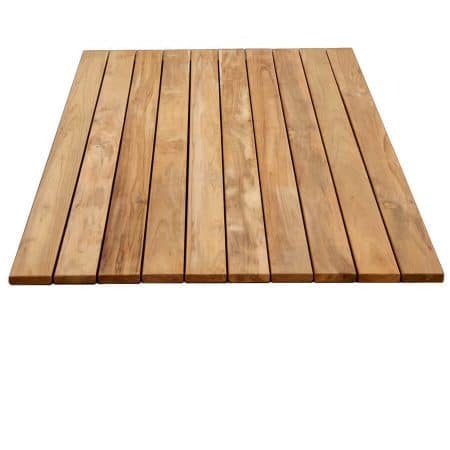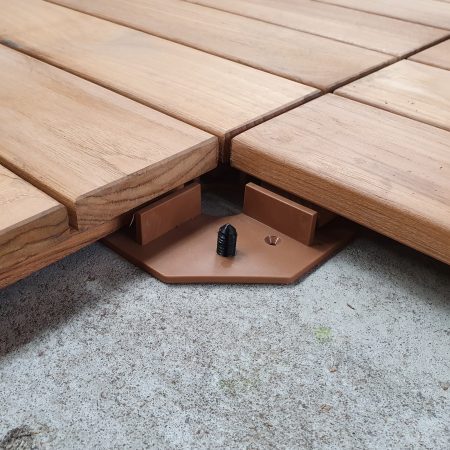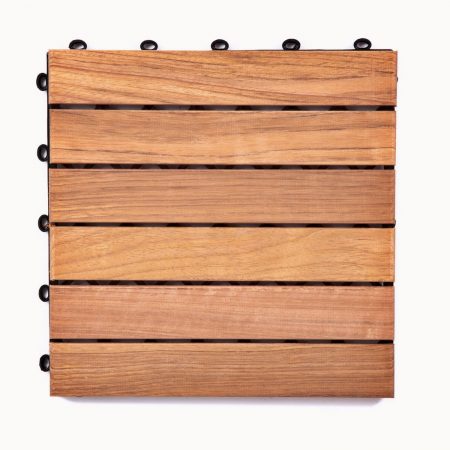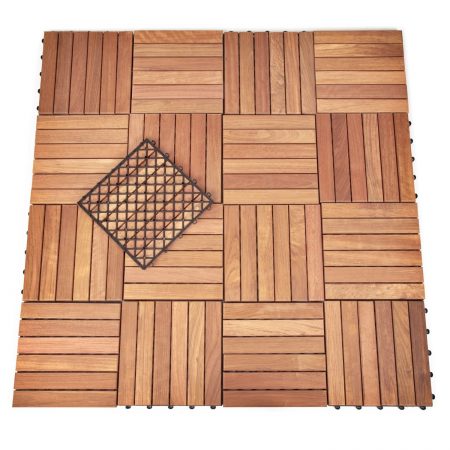The wooden terrace elements can be laid much easier and faster than a wooden terrace made of decking boards. If the Ground level and solid you only need a hammer to secure the spacers in the desired locations and a saw for the dimensional adjustments to the decking edges. The terrace elements can easily be carried by two people. Many square meters can be laid within an hour.
Any flat and solid surface is suitable for laying wooden terrace elements. Small bumps are automatically leveled out by the elements thanks to the integrated rubber feet. If we give you one laying plan created, you can see where each element has to be placed.
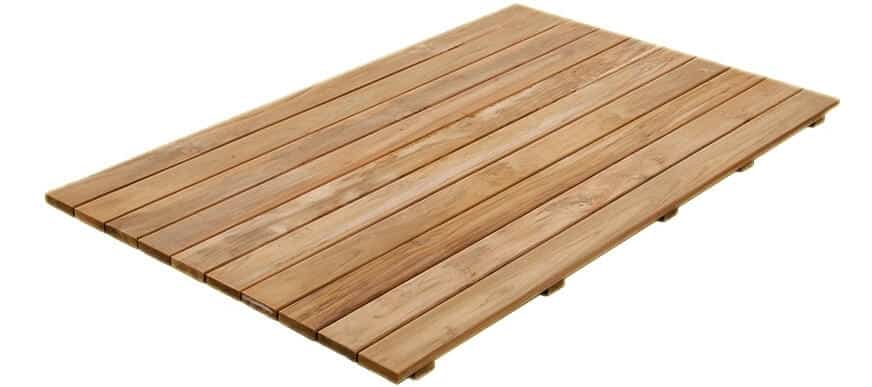
- Start in a corner of the planned patio area. Hit with one Hammer two of the small spacers laterally into the first element on the sides where another element rests. In this way you achieve a constant joint width between the elements. The joint width between the elements corresponds to the joint width of the decking boards on the covering.
- Place the next element next to the first element and connect the elements at the adjacent corners on the bottom with the plastic binders. If you cannot reach one of the corners (e.g. if an adjacent house wall prevents this), it is not a problem. As the assembly progresses, the stability of the elements among themselves also increases.
- Then create the next element and connect at the respective adjoining corners. Repeat these steps until your patio is completely laid,
If you would like to screw your terrace from the terrace modules to a wooden substructure, this is also possible. Please inform us before ordering so that we do not attach rubber feet when assembling the elements in this case. In this case, the substructure of the element must be screwed to the laid wooden substructure at four corners with narrow stainless steel screws (50mm long).
Our elements & wooden tiles
ab 230,00 € m²
6,50 €
Cumaru wood tiles, FSC 100%
Price: €72 per m2, resistance class: 1
Advantages: ✓ best durability ✓ particularly robust and scratch-resistant
Disadvantages: ✗ partly rough surface
Tip:Sand tiles after initial exposure to weather.


